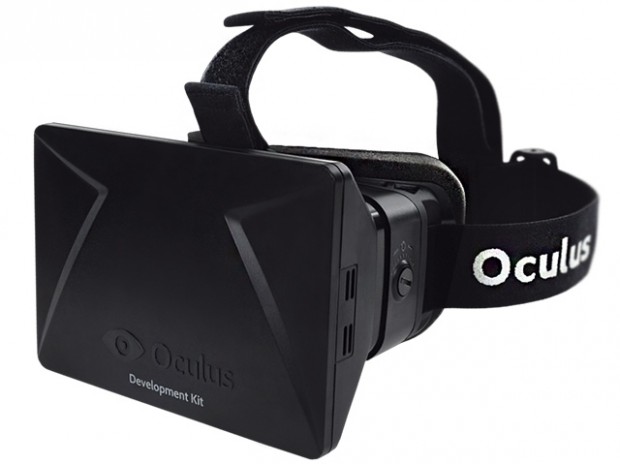Designing for VR – Dos and Don’ts from nDreams
- Updated: 11th Jul, 2014

nDreams like VR. They like it a lot. You might not have heard of them before – a lot of their work so far has been in casual mobile games and building alternate realities within PlayStation Home. Now their focus is on virtual reality, launching VR Focus earlier this year, a website dedicated to VR games news, and doing plenty of research into the advantages and pitfalls of developing games for virtual reality.
Speaking at Evolve during the Develop in Brighton this week, nDreams CEO Patrick O’Luanaigh revealed the lessons they’ve learned so far. The key to successful VR is presence: the feeling of actually being there. While modern games tend to enhance our abilities – perhaps by building things to a bigger scale or using a default movement speed that’s far beyond normal – these things simply don’t work when using a virtual reality headset.
The uncanny valley of almost-realistic objects is critical – you want to avoid “what I know, but it didn’t feel right”. Everybody walks and turns – we have a wealth of experience of how this feels and anything that feels wrong will break the sense of presence, of reality. I noticed this myself when trying out Project Morpheus’s The Deep demo later during the conference. Set underwater in a shark-proof cage, I would see the water around me but not feel any motion when the cage supposedly rocked underfoot.
O’Luanaigh shared a few stats about real-world and in-game movement. The average person’s walking speed is about 1.4metres/second, while the average jogging speed is 3.4m/s. Human sprinting is roughly 5.5m/s. O’Luanaigh told us that Call of Duty’s run speed is 6.95m/s – it’s necessary to cover the maps and keep games feel exciting but feels ridiculously fast in VR.
We can spin at approximately 0.5 revolutions per second. Call of Duty players can turn at a rate of 1.5 revolutions per second. Turning at that speed in VR will make you nauseous.
According to O’Luanaigh, there are many things like this that we take for granted in current video games but will ruin the experience when used in VR. He provided a list of things to do and things to avoid when designing for VR
Things To Avoid:
Cut scenes with switching cameras. If you’re looking through your characters eyes, you wouldn’t be switching viewpoint, so don’t do this in the game.
2D GUIs. VR display pixel density decreases as you get farther from the centre. 2D graphics will become distorted.
Keyboard controls like WASD and QTEs. Players can’t see the keyboard and not everyone will be able to do this by feel. You could probably get away with using the cursor keys and the spacebar but nothing more complex.
Headbob or camera bob. They can make the action look dramatic on a TV screen but VR viewers will probably feel sick in a bouncing world.
“Throw ’em into the action”. People want to explore a VR world, not be rushed through environments. That said, if VR does become more ubiquitous, I can see people wanting to jump from thrill to thrill.
Any sudden or snap movements. The disconnect between motion seen and motion felt will make this jarring.
Hitting or collecting objects with your face. Smashing camera-first through a window is dramatic. Smashing face-first through a window is horrible.
Things To Do
Don’t assume you need a player body. It’s a ton of animation and if you’re going for self-immerson, you’ll need to match the player’s skin tone, height, etc. Is it really necessary?
Keep every movement smooth.
Use 3D items to display information rather than a HUD. Perhaps a watch to tell the time, look into your backpack to see your inventory, etc.
Use 3D text if you need it. It looks better in the world.
Experiment to learn what works. Don’t assume any of the rules are the same as design for a monitor.
3rd person viewpoint can work. nDreams have a prototype called Spacewrecks that positioned the player’s viewpoint in an overhead drone camera looking down on the action.
Fidelity is incredibly important. You’ll need to render your game at 1080p, 60fps from two different viewpoints. You’ll also need great audio. Players expect to hear sound from all directions so make sure you can provide it.
Here’s a quick clip from the Spacewrecks prototype. Obviously The Average Gamer isn’t quite set up to run on VR headsets just yet, so it’s in boring on-screen footage.
https://www.youtube.com/watch?v=7u-9kFJDLG4

Follow Us!